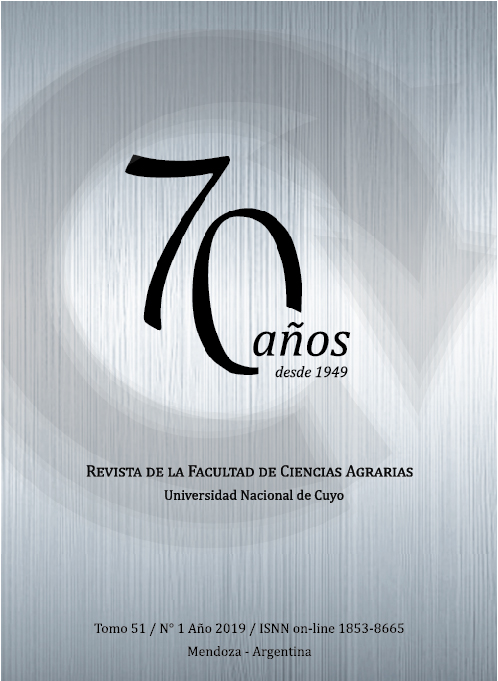Catalog of the type material in the Herpetology Collection of the Instituto de Biologia Animal (Facultad de Ciencias Agrarias, Universidad Nacional de Cuyo)
Palabras clave:
Material tipo, IBA-UNCuyo, Amphibia, Reptilia, HerpetologíaResumen
The Herpetology Collection of the Instituto de Biología Animal of Mendoza (IBA-FCA UNCuyo) is one of the most important of Argentina, for the type material deposited there and because includes a large number of specimens from central-western Argentina and Patagonia. The collection is in a process of ordering for it to the scientific community to access the material with ease. This arrangement allows recognizing the deposited type material, most of it corresponding to Argentina's species described by J. M. Cei, who conducted his investigations at this institute between 1955 and 1980. Also developed research in the Institute R. Donoso-Barros, J. A. Scolaro, F. Videla, L. P. Castro, G. Macola and V. Roig, among others. The type material comprises a total of 295 specimens, belonging to 38 species, 32 of them being holotypes and 263 paratypes. The materials designated as Neotypes of Liolaemus anomalus Koslowsky, 1896 and Liolaemus melanops Burmeister, 1868 do not constitute type material since the original types were found. Fourteen types that should have been deposited in the collection were not found, including the holotype of Homonota andicola Cei, 1978.
Descargas
Descargas
Publicado
Cómo citar
Número
Sección
Licencia
Aquellos autores/as que tengan publicaciones con esta revista, aceptan las Políticas Editoriales.











.jpg)




